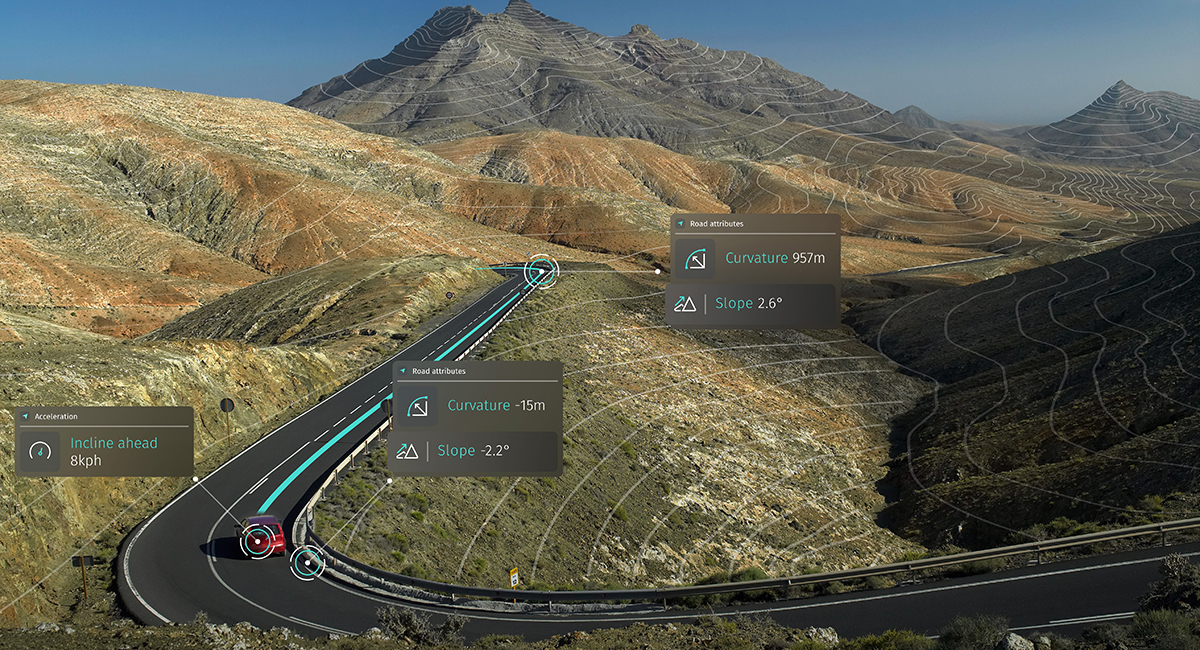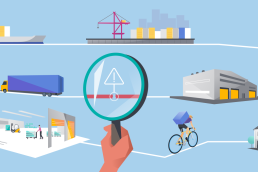Location intelligence technology was once a nice-to-have tool for enterprises, logistics firms, and delivery companies. But today, it’s the bedrock of a bustling logistics economy, providing businesses with the real-time capabilities and intelligent insights they need to stay on top.
Last year saw AI tools, electric vehicles, and CO2 reductions become the norm for enterprises big and small. In 2023, location intelligence solutions are what will supercharge these innovations and take them from the lab to the streets.
From last and middle mile logistics, micromobility, or a boom in predictive analytics, let’s take a look at six of the key location intelligence trends for this year.
Increased focus on privacy and security
As the use of location intelligence technology grows, companies face a greater burden of responsibility in ensuring customer data is kept private and secure.
If you’re operating in the EU, you’ll already be well aware of stringent GDPR requirements which demand stronger, more transparent data governance, storage and usage. Above all else, there’s the need for fully informed consent, which enterprises must deliver in an accessible, user-friendly way.
In 2023, privacy and security requirements for location intelligence data goes much deeper than legal compliance–and services like HERE Maps and Google Maps already use random identifiers to ensure that sensitive location data is anonymised and no one device can be exposed. But location intelligence platforms are growing increasingly sophisticated, which means that the data used and gathered is becoming more focused.
That’s why enterprises will need to take extra care this year to ensure that only specific and relevant location data is gathered, processed and stored. Route mapping and place information will prove much more useful for your business in managing logistics than granular data about individual users–ensuring you not only reach your objectives, but protect user privacy and rights.
Emergence of 5G technology
It seems to have happened almost overnight, but 5G connectivity is finally here. For years, the promise of 5G has been that it will bring improvements to the speed and reliability of location-based services. The net benefit of this for enterprises is that real-time location data can finally play a business critical role in logistics.
This will have a huge impact on the ability of enterprises to fulfil middle and last-mile objectives. Real-time fleet insights can give operations managers the tools they need to oversee all activity at any given time of day, with information on driver whereabouts and availability being delivered with razor-sharp precision.
On the flipside, couriers, drivers and fleet operatives will have access to more accurate real-time traffic predictions, route mapping, and ETAs. This will ensure they’ll get to where they need to go much quicker than before–with a net benefit for customers and the organisation alike.
To take full advantage of 5G technology, businesses may need to up their investment in smart sensors and IoT technology across their operations in order to gain the necessary insights they need to thrive.
Growth of location-based marketing
The integration of location marketing and the future of transit is already becoming abundantly clear in 2023, with Porsche set to start integrating electric vehicle charging stations with amenities like coffee, takeaway food, bathrooms and more.
But there’s a bigger prize to be won for firms that use location intelligence. Properly stored and anonymized location data is like gold dust to the marketing industry, which is upping its geomarketing spend year-on-year.
Location data enables marketers to tie consumer behaviour to specific towns, cities, or regions. This promises an incredible level of detail for targeted advertising and marketing, ensuring that consumers can be targeted with highly relevant, location-specific information about local products, services, and businesses.
We’re not just talking about foot traffic here either, but higher conversion rates, a better user experience, and more powerful marketing insights. For example, if someone has given an app location permissions, marketers can serve relevant push notifications and recommendations to them when they enter a specific area or even business.
Uber is a great example of a company which already uses this kind of location-based marketing to serve car availability and food recommendations to customers that visit a new area.
Ultimately, the growth of location-based marketing will help ensure a greater degree of personalisation, benefiting consumers and enterprises alike.
CO2 reduction fuelled by location intelligence
As countries across Europe work towards the EU’s goal of phasing out new petrol vehicles by 2030, CO2 reduction is fully on the location intelligence agenda for 2023.
Firstly, that means a rise in the use of electric vehicles for logistics. Enterprises are working hard to electrify their fleets, which introduces a new demand on route planning for drivers in need of regular charging stops.
Retail stores are already boosting their customer reach by installing EV charging points, while location intelligence solutions like HERE have built-in capabilities which generate optimal routes for EVs and predict EV charge point availability.
HERE even maps more than 500,000 electric vehicle charging stations across 91 countries in the form of HERE EV Charge Points.
Managing payload capacity with these tools is also critical, as it can ensure more shipments and less trips are made.
On top of all that, a boom in carbon-neutral micromobility solutions means enterprises are now able to shift towards electric cargo bikes, scooters, and more to fulfil last mile orders. This could mean the face of delivery logistics looks very different in 2023, as drivers shift from roads to bike lanes.
For the enterprises still using a largely petrol or diesel engine fleet, location intelligence AI will continue to play a key role in reducing congestion on the roads and cutting down engine idle times. Real-time location intelligence makes it possible to monitor and predict both traffic density and air pollution, leading to tangible outcomes for carbon emission reduction.
Automated vehicles on the rise
Automated vehicles have long been promised by the likes of Elon Musk and other EV producers. While we’re still nowhere near ‘full self-driving’ which uses automation technology to provide logistics with almost no human input, automated functions in vehicles are definitely on the rise.
You may already have seen fast food delivery robots on the streets which can ferry meals from restaurants to customers, but there’s also a corresponding rise in new drone technologies (such as Amazon Prime Air) which are capable of fulfilling last-mile orders from the air–without a pilot.
The main obstacle to the full roll-out of these technologies is mostly a regulatory one, but 2023 could be the year that governments and local authorities open the floodgates for fully automated location solutions.
Once these automated vehicles become commonplace, they will play an important supplementary role in how enterprises use their location intelligence solutions, with drones, self-driving cars and buggies all factoring into fleet management and route planning. Whether they’ll take off in 2023 remains to be seen.
Predictive analytics and probabilistic modelling will help enterprises avoid unforeseen challenges
If the COVID-19 pandemic taught the logistics sector anything, it’s that supply chain disruptions can come out of nowhere. We all saw how a combination of booming online sales and staff shortages created huge headaches for enterprises looking to fulfil orders for their customers and staff.
Artificial intelligence and predictive analytics already play an essential role in location intelligence solutions like HERE, making it possible for fleet managers and drivers to fulfil deliveries with full oversight and minimal disruption.
But probabilistic modelling and predictive analytics can also provide insights into how enterprises can tackle systemic disruptions, whether it’s a pandemic, bad weather, or a road traffic disaster.
Expect to see more enterprises performing this kind of analysis this year, using location intelligence tools to plan and prepare for the worst.
Local Eyes B.V. is a leading reseller and integrator of geospatial technologies and data that has been contributing to its client’s success for the past 10 years by optimizing their decision-making and logistic processes. If you’re interested in learning more about how Local Eyes can provide Point-of-Interest data, get in touch today.






